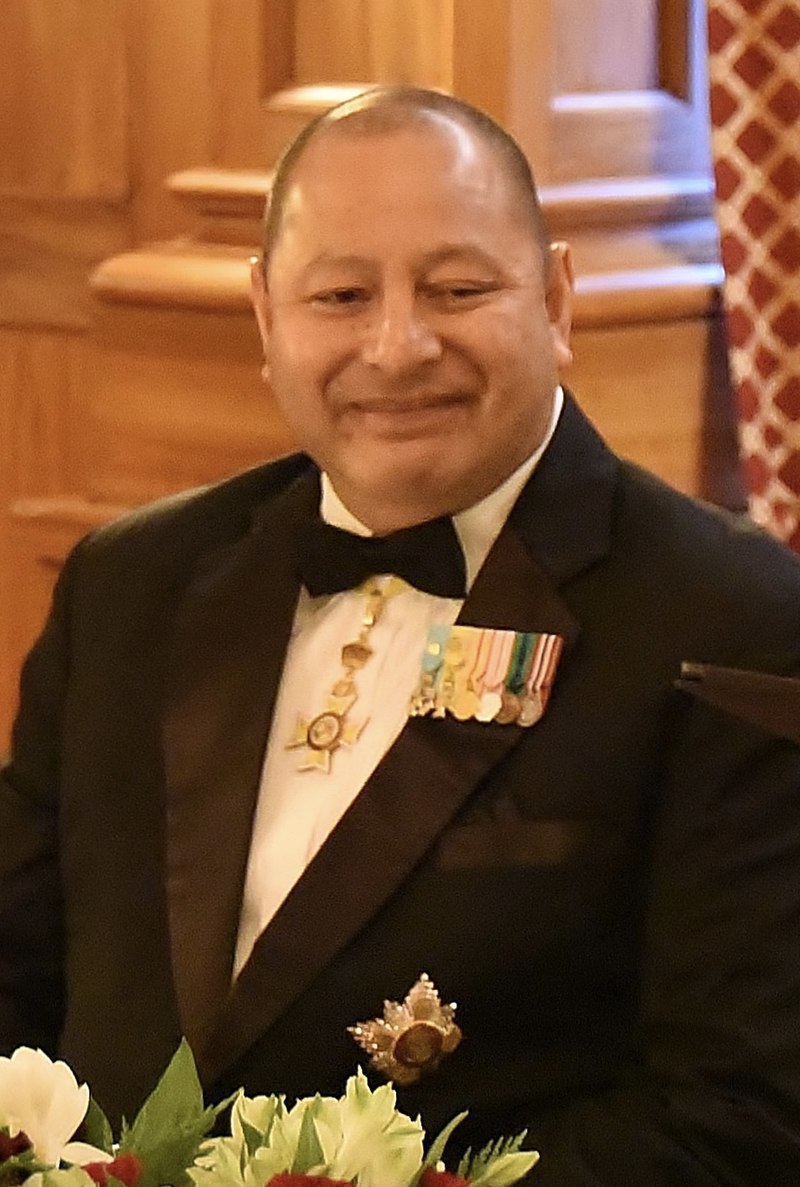by Scott Mehl © Unofficial Royalty 2014
Kingdom of Tonga: Tonga consists of 169 islands, of which 36 are inhabited, in the south Pacific Ocean, about 1,100 miles/1,800 kilometers northeast of New Zealand’s North Island.
Tonga has long been a monarchy and by the 12th century, Tonga and its Paramount Chiefs had a strong reputation throughout the central Pacific Ocean. Tonga became a kingdom in 1845 and has been ruled by the House of Tupou. From 1900 to 1970, Tonga had a protected state status with the United Kingdom which looked after its foreign affairs under a Treaty of Friendship.
The order of succession to the throne of Tonga was established in the 1875 constitution. The crown descends according to male-preference cognatic primogeniture – a female can succeed if she has no living brothers and no deceased brothers who left surviving legitimate descendants.
*******************

King Tupou VI of Tonga; Credit – Wikipedia
King Tupou VI of Tonga was born on July 12, 1959, at the Royal Palace in Nuku’aolfa, Tonga. He is the youngest son of King Tupou IV and Halaevalu Mataʻaho ʻAhomeʻe, and the younger brother of the late King George Tupou V. His given name at birth was ʻAhoʻeitu ʻUnuakiʻotonga Tukuʻaho. In keeping with Tongan tradition, he was later given three chiefly titles – Lavaka, ‘Ulukalala and Ata – which would typically replace his given name. He was known by any combination of these titles until he became Crown Prince. At that point, he retained the Lavaka title but passed the other two to his sons. (To avoid confusion, he will be referred to as Lavaka).
Following his early schooling in Tonga, Lavaka attended The Leys School in Cambridge, England, graduating in 1977, and earned a degree in Development Studies from the University of East Anglia in 1980. A military career followed. Lavaka joined the Tongan Navy and served until 1998. During this time, he attended the US Naval War College, graduating in 1988, and earned his Master’s Degree in Defense Studies from the University of New South Wales (Australia) in 1997. After leaving the military, he attended Bond University in Australia, earning another Master’s Degree in International Relations in 1999.
Lavaka was also involved in the Tongan government, serving as Defense Minister and Foreign Minister for several years. In 2000, he was appointed Prime Minister, a position he would hold until 2006. In September 2006, his father King Tupou IV died and his elder brother took the throne as King George Tupou V. The new King was not married and had no legitimate children, so Lavaka was the heir-presumptive. Days later, he was formally granted the title of Crown Prince (Tupoutoʻa).

Queen Nanasipauʻu; Credit – Wikipedia
Lavaka married Nanasipauʻu Tukuʻaho, his second cousin, at the Chapel Royal, at the Royal Palace, in Nukuʻalofa, Tonga on December 11, 1982. The couple has three children:
- Princess Lātūfuipeka Tukuʻaho (born 1983)
- Crown Prince Tupoutoʻa Ulukalala (born 1985), married his double second cousin, Sinaitakala Fakafanua, had one son and two daughters
- Prince Ata (born 1988)
In 2008, Lavaka was appointed Tonga’s first High Commissioner to Australia and took up residence in Canberra. He would remain in this position until March 18, 2012. On that day, his elder brother King George Tupou V passed away and Lavaka ascended the Tongan throne as King Tupou VI.

King Tupou VI after his coronation ceremony; Credit – Wikipedia
King Tupou VI and Queen Nanasipau’u were crowned in a ceremony conducted at Centenary Church in Nuku’alofa. Tonga on July 4, 2015. The celebrations included many international guests, and an estimated 15,000 people lined the roads.
This article is the intellectual property of Unofficial Royalty and is NOT TO BE COPIED, EDITED, OR POSTED IN ANY FORM ON ANOTHER WEBSITE under any circumstances. It is permissible to use a link that directs to Unofficial Royalty.


























